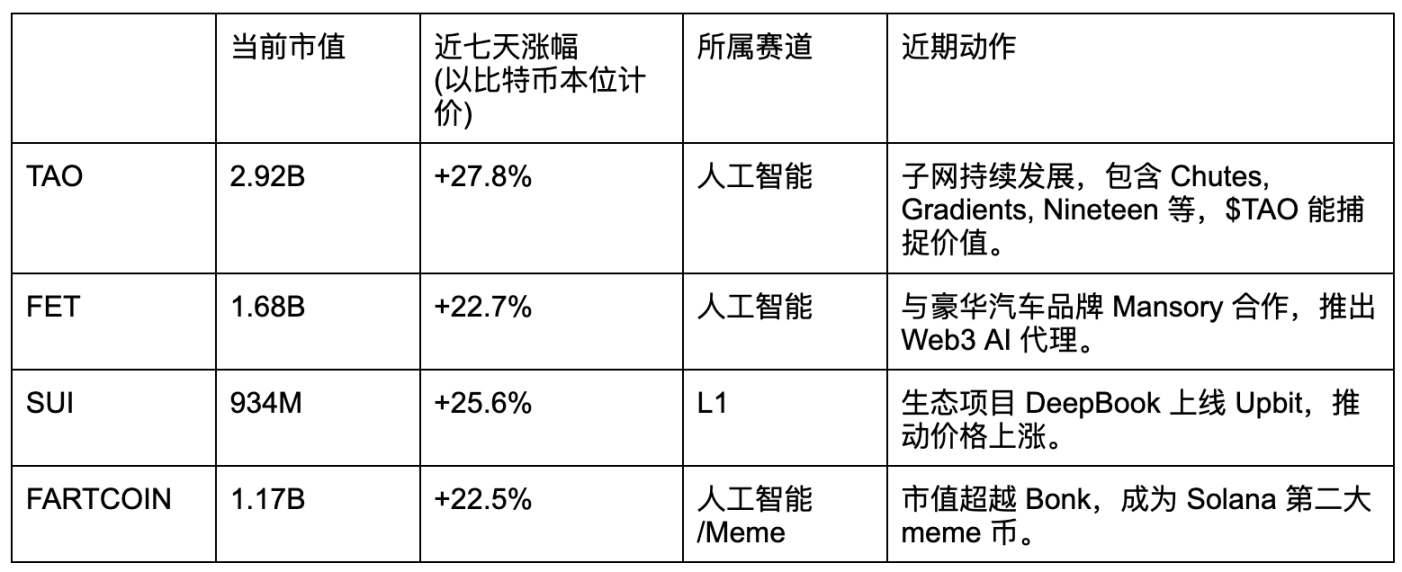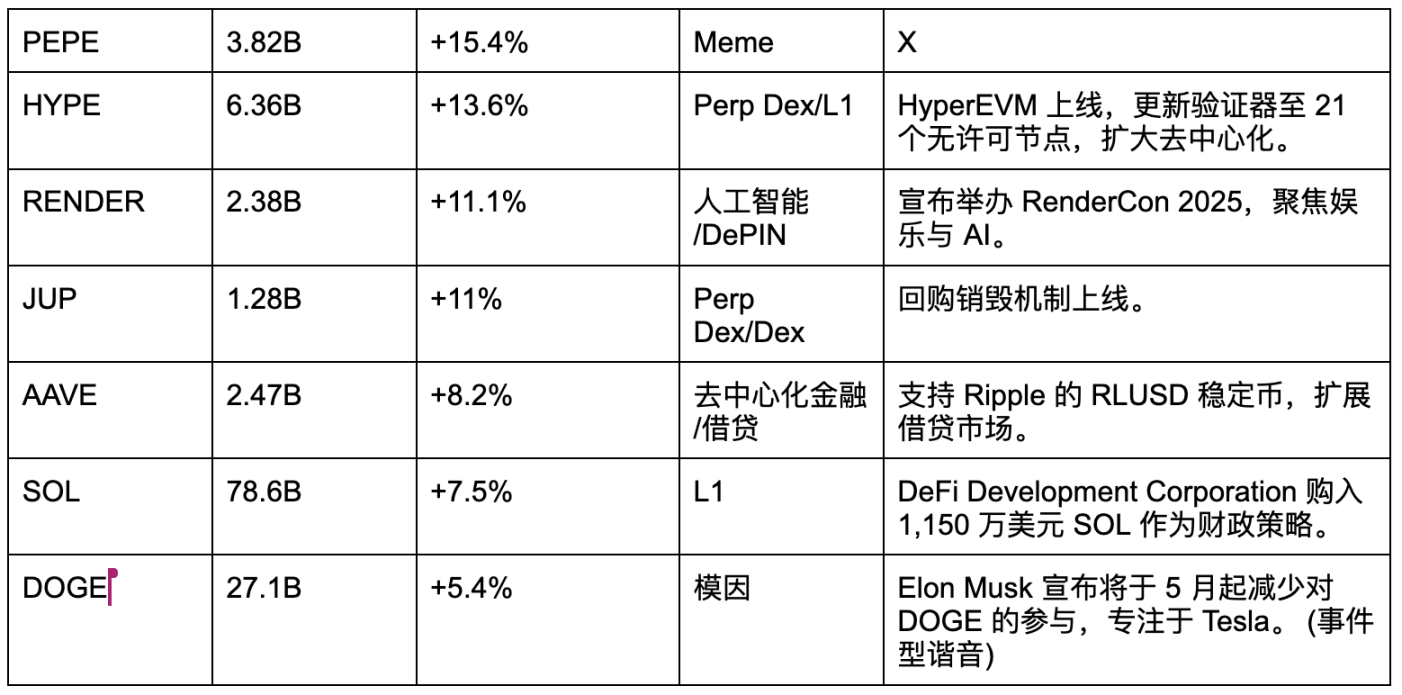Bitcoin regained the 90,000 mark on April 23. On the one hand, the situation of the tariff war became clearer. U.S. Treasury Secretary Besant said that the tariff deadlock was unsustainable and the situation was expected to ease in the near future.
On the other hand, Trump has been publicly pressuring Federal Reserve Chairman Powell, strongly demanding a rate cut, and even threatened to fire him if he didn't. This move has made the global market doubt the independence of the Federal Reserve, thus triggering distrust of the dollar. The latest situation is that when the media asked Trump about this, Trump said: "I have no intention of firing him (Powell). I just hope he can be more proactive in lowering interest rates."
When Trump asked Powell to step down, Bitcoin played the rare safe-haven function of "digital gold", and its trend was highly correlated with physical gold. Now that Powell's career crisis has been resolved and U.S. stocks have rebounded sharply, Bitcoin has continued to rise. At this time, Bitcoin has also enjoyed the dividend of the premium of liquid assets, rising 12% in the past seven days.
We mentioned in the previous article that altcoins have not kept up with the rise of Bitcoin this time. The current market share of Bitcoin is as high as 64.2%, a four-year high. Although it is still uncertain when the altcoin season will come, we can observe which altcoins are stronger than Bitcoin during the market turmoil cycle, so as to find out the capital preference and the high probability that the strong trend will continue in the future.
The top 100 currencies by market capitalization have performed better than BTC in the past seven days
The following table lists the top 100 tokens by market value, and the currencies that have performed better than BTC in the past seven days. In fact, there are more than just the following 11 tokens. On April 23, while Bitcoin soared, its market share fell slightly (0.2%), which means that some altcoins generally rose. Therefore, many currencies that had been falling for a long time overtook Bitcoin's seven-day increase overnight. However, this increase should be interpreted as liquidity spillover rather than the result of capital selection.
Therefore, when choosing tokens, we exclude those that skyrocketed overnight, and instead choose altcoins whose growth has steadily surpassed BTC in the past seven days.


Which tracks should we focus on?
Find the intersection of the above tokens, and focus on: AI, L1, Meme and DeFi
AI: The previous wave of narrative was initiated by AI, starting with the combination of GOAT and memes. Later, more possibilities and applications were explored. The AI craze brought about a bubble, which burst when the Trump family issued coins one after another. In the end, most AI tokens fell by more than 90%, reshaping their valuations.
The bursting of the bubble does not mean the end of the track, but rather a mechanism to eliminate the good and bad projects in the market. This means that with the continuous development of Web 2 AI, Web 3 AI projects have gone through a round of reshuffle. If you believe that Web 2 AI can be transmitted to Web3, then the valuation of the AI track is relatively cheap now, and the fundamentals of the remaining projects have been tested. If the altcoin season comes in the future, this track is expected to take over the liquidity spillover from Bitcoin.
Representative currencies other than those in the table: VIRTUAL, ARC, ALCH, SWARMS, Zerebro
L1: Public chain coins have always been a relatively stable choice when the copycat season comes. The overall logic is that the development of the public chain determines the ceiling of its ecological projects, and it can also capture the most liquidity.
But unlike 2021, funds are no longer paying for "EVM copy and paste", but looking for public chains whose TPS and developer tools can truly bring new applications. Once specific catalysts (exchange listing, institutional warehousing) appear, the price elasticity is significantly higher than the old L1.
Emerging public chains without token issuance: Monad, MegaETH
Meme: Bitcoin is the largest meme coin in the entire currency circle. Meme coins have become popular in this cycle and are likely to survive in the future. The key factor is that meme coins are the carriers of consensus and culture. The top meme coins of each public chain can also be regarded as leveraged versions of public chain coins. Most meme coins are native on the chain, and the pricing power is not monopolized by centralized exchanges, so it is easy to have a wealth effect. As long as there is a wealth effect in the currency circle, there will be an endless supply of liquidity and participants.
DeFi: DeFi is a rare track with a real business model in the cryptocurrency circle. Perp Dex and Dex earn transaction fees; lending can earn the interest rate difference between deposits and loans; Yield Farming earns deposit and withdrawal fees; LaunchPad earns token issuance fees. HYPE, JUP, and AAVE in the table are all dominant players in the DeFi field. More importantly, they also have a token repurchase mechanism, which means that with the advent of the cottage season, liquidity recovery will increase trading volume. Since the top DeFi protocols have network effects, they will also drive the overall project to have higher profits, and higher profits mean stronger repurchases. When the demand for tokens increases, the probability of continued price increases will also increase.
Conclusion: Pay close attention to Bitcoin's market share
The start of the altcoin season means that funds are flowing from Bitcoin to altcoins with higher risks and smaller market capitalization. Therefore, there are two key indicators to observe: first, whether Bitcoin can stand above 90,000 to provide a stable confidence anchor for the market; second, and more importantly, whether Bitcoin's market share (BTC.D) can begin to decline, reflecting the beginning of the spread of capital preferences.
On April 23, Bitcoin surged to 90,000, but BTC.D only fell slightly by 0.2%, indicating that the current stage is still "funds are concentrated in BTC and the standard is growing steadily." However, if BTC.D begins to decline significantly, for example, returning to the 57% level at the beginning of this year, it will be a signal that funds are officially overflowing to the altcoin market, and then the "rotation market" will have a chance to fully unfold.
In other words, the real starting point of the altcoin season is not only the continuous highs of Bitcoin, but also the process of rising risk appetite and the spread of funds from BTC to other theme tracks. When these two things happen at the same time, we have the opportunity to see the overall market become fully active. Now is the time to observe, screen, and plan. Whether the altcoin craze is coming, the trend of BTC.D will give the answer.














